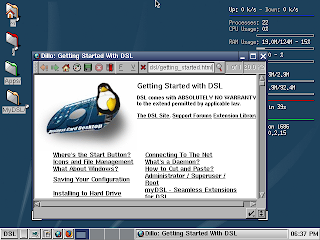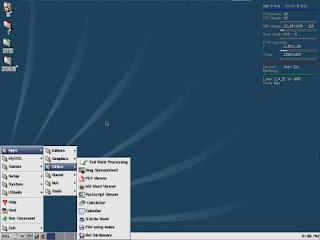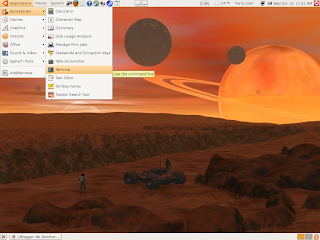What did i like the first 2 hours of use?
- The new wallpaper that shows the Interbix Ibex (all Ubuntu codenames come from animals) is really cool.
- The DarkRoom theme is cool as well. Many users like dark themes and this one is quite polished. It will also serve to lessen the accusations of Ubuntu haters, that Ubuntu's default theme sucks. Personally, i hope this really cool theme is released. It is currently only a mock-up, but it is very impressive and cannot be accused of being Mac or Vista rip-off.
- The new network manager worked without any issues and can connect to networks before login, which is useful for network authentication (if i 've got that right). It is also more advanced in handling 3g networks.
- Compiz 0.7.8 with the cylinder & sphere effects enabled! see screenshots below
- It has 2.6.27-7 kernel which has A TON of new driver as well as new features.
- X.org 7.4 which is suppossed to never require any configuration.
- Gnome 2.24, with tabbed browsing in Nautilus.
- You can search for printer driver from the internet inside the printer configuration program.(Although many printers will simply work out of the box)
- You can encrypt files/folders. Works out of the box without installing anything else. I haven't figured out how it is done yet, though. I will write a new post about this.





The one thing that i did not like at all, was that OpenOffice was version 2.41 instead of 3.0. I hope that it will make it to the official repositories and soon.
There are also 2 minor annoyances, that the compiz-settings-manager does not come pre-installed and that universe and multiverse repositories are not enabled by deafult (this can confuse new users). You can install it from System->Administration->Synaptic or from the terminal with this command:
sudo apt-get install compizconfig-settings-manager
All in all, Ubuntu 8.10 is a great operating system and once you install your first program using the Synaptic package manager, it is easier to use and maintain than Vista or even Windows Xp and way more impressive. (No defragment,1 click update for ALL YOUR PROGRAMS, virtually no viruses and malware.Those viruses can't even infect the whole OS, just the current user)







